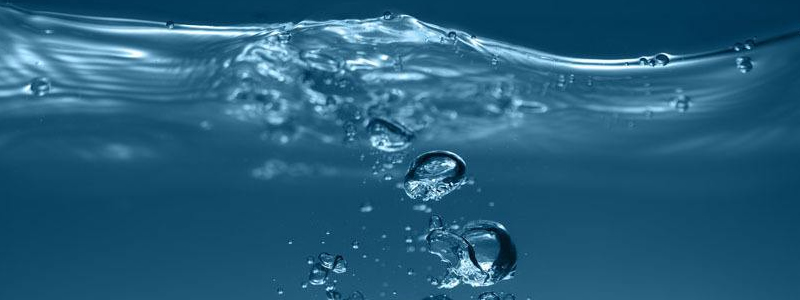
Polymers in liquid and dry form
The word "Polymer" simply means “many parts,” which covers a broad range of compounds including styrofoam and DNA. Polymers are long-chain molecules with repeating parts. For wastewater treatment, polymer pertains to polyelectrolytes, which are polymers with molecular chains that produce an electric charge when dissolved.
Cationic polymers produce a positive charge while anionic polymers produce a negative charge. These long chain molecules attract particles of an opposite charge while offering many sites for attachment. In some cases, both positively and negatively charged polymers are used in a scheme called dual polymer flocculation, where the polymers are introduced in sequence. There are also nonionic polymers, which some would argue are not true polyelectrolytes, but are considered as such due to their similar function.
Flocculation is the goal of polymer use, where you take many small particles and form them into much larger structures. These larger structures precipitate much more readily out of solution, which is the key to clarification by settling. This effect is also critical to the function of filtering fine colloids as well as the dewatering of sludge. The more you bring the solids together, the easier the water can be removed. Polymer also has a distinct advantage over metal salts (ferric chloride, alum) when used in filter processes. Metal salts form hydroxide precipitates that clog filters, while polymer floc tends to deform once it encounters the filter media. Polymer can be used in conjunction with metal salts as a coagulant aid, typically for phosphorous removal.
Advice for proper selection
Jar testing is usually used to select the appropriate polymer for an application. I have seen many labs where a jar test apparatus sits high on a dusty shelf, used once to help choose a polymer. Now, the polymer market is so competitive that most companies will send a representative to your facility to perform jar tests and offer free samples. Use these resources and shop around. The technology is constantly improving, and you might be using a product that is no longer the best fit.
Polymers come in liquid and dry form, although liquids remain more popular. Dry polymer must be liquefied before use, which can be troublesome. The slightest amount of moisture in the wrong place can cause clumping and sticking. Liquid polymers have to be mixed with water as well, but the process tends to be much easier. Follow the manufacturer’s instructions for proper dilution as well as mixing time. The molecules need sufficient time to attain their full length and form. On the other hand, too much mixing can fracture the long chain molecules, inhibiting their effectiveness. Polymer effectiveness is also affected by temperature and pH.
Anionic and nonionic polymers are very low in toxicity. Cationic polymers are considered much more toxic to aquatic life because they clog fish gills, causing suffocation. Considerable research has also looked into how residual polymer reacts with chlorine, ozone and ultraviolet light. After all, anything we add to water has implications on anything else that might be present. By using the minimum effective dose of polymer, you will minimize its potential toxicity.
And finally, a few tips
Polymer should be treated with utmost respect. Always use personal protective equipment when working with polymer. Spilled polymer is extremely slippery and very hard to clean, and I’ve heard of operators using everything from kitty litter to mineral oil to rock salt to effectively clean the mess. However, your best bet is to contact your supplier for cleaning product recommendations. From my experience, the last thing you want to do is turn a hose on it, which merely makes a small polymer mess into a large one.
It is also a good idea to find a dispersant that is designed to clean the inside of your polymer pumping equipment. The tiny ball-check valves in chemical feed pumps often become fouled, and a preventive cleaning is far easier than tearing the gunked-up thing apart.
Polymer use in our industry is well instituted and will continue to grow. Through research and development, the products that become available to us are likely to evolve in effectiveness and safety. As operators, it is in our best interest to develop standard operating procedures that minimize effective dosage, maximize efficiency and ensure the safety of personnel.
For more information or Inquiry about our polymers - PolyDADMAC,PAC,PAM Polyamine(copolymers and homopolymers), please contact us :TIAN@CHEM.NET
 Previous
Previous  Next
Next Get answers and advice from people you want it from.